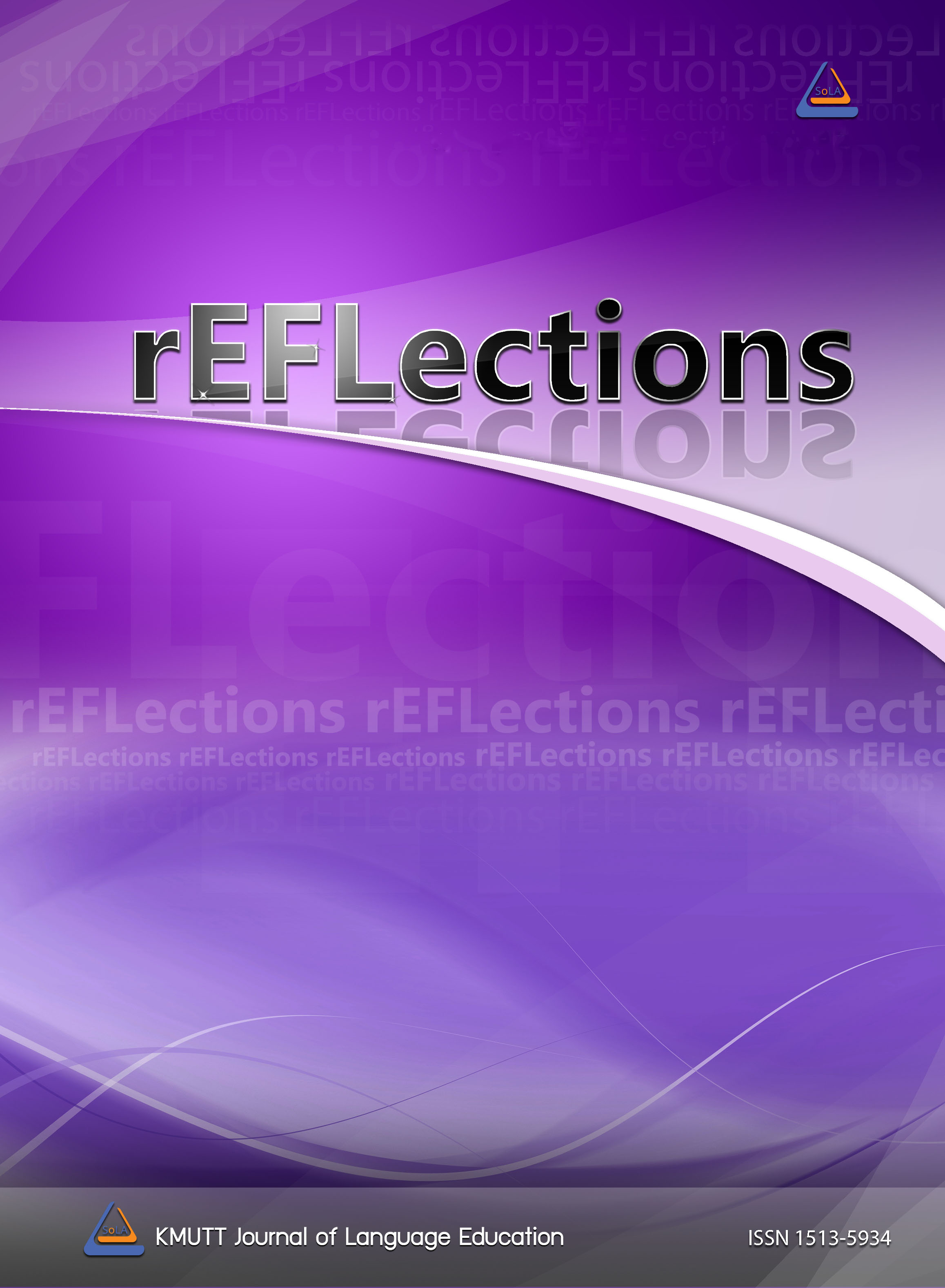A Corpus-based Study of Thai and English Quantity Word Equivalents: 'Lǎay', 'Several' and 'Many'
Main Article Content
Abstract
The present study investigates the Thai quantifier ‘lǎay’ (หลาย) and its two major English lexical equivalents: ‘several’ and ‘many’, using data from an English-Thai parallel corpus, the Thai and British National Corpora. An examination of the parallel corpus reveals that the quantifier ‘lǎay’ has a broad semantic property as it can express meanings related to small, medium and large quantities or just the plurality of entities. This provides support to an observation that the word can pose problems for Thai EFL learners, translators and interpreters when expressing the concept of ‘lǎay’ in English. Based on the parallel corpus, two English quantity words that denote different scales of quantity, ‘many’ and ‘several’, were found to be among the most common lexical equivalents of ‘lǎay’. Further comparative investigation was conducted on the Thai and British National Corpora. It is found that ‘lǎay’ and its two common equivalents have overlapping and different co-occurrence patterns, illustrating their lexical equivalent status and distinct usage profiles at the same time. Differences between the two English equivalents were then focused on so that empirical evidence of usage patterns of the two most common English lexical equivalents of ‘lǎay’ can be obtained. Findings from the study provide an insight into phraseological patterns and pragmatic-discourse functions associated with the English equivalents, which Thai speakers of English can make use of as a possible framework for their decision making when translating ‘lǎay’ into English.
Article Details
References
Aroonmanakun, W. (2009). English-Thai Parallel Corpus. Chulalongkorn University http://www.arts.chula.ac.th/~ling/ParaConc/
Bach, K. (2000). Quantification, qualification and context: A reply to Stanley and Szabó. Mind and Language, 15, 262-283.
Badia, A. (2009). Quantifiers in action: Generalized quantification in query, logical and natural languages. Springer US.
Biber, D., Johansson, S., Leech, G., Conrad, S., & Finnegan, E. (1999). Longman grammar of spoken and written English. Longman.
Carden, G. (1976). English quantifiers: Logical structure and linguistic variation. Academic Press.
Channell, J. (1990). Vague language. Oxford University Press.
Deephuengton, P. (1992). A study of quantifier phrases in Thai. Kansas Working Papers in Linguistics, 17(1), 223-255.
Dichtel, F. (2016). A quantifier used on many occasions: Many evoking diversity in positive sentences. International Journal of Corpus Linguistics, 21(1), 80-104.
Drave, N. (2002). Vaguely speaking: A corpus approach to vague language. In P. Collins, P. Peters & A. Smith, New frontiers of corpus research (pp. 25-40). Rodopi.
Dubois, B. (1987). Something on the order of around forty to forty-four: Imprecise numerical expressions in biomedical slide talks. Language in Society, 16, 527–541.
Gavins, J. (2007). Text world theory: An introduction. Edinburgh University Press.
Hardie, A. (2012). CQPweb - combining power, flexibility and usability in a corpus analysis tool. International Journal of Corpus Linguistics, 17(3), 380–409.
Hardie, A. (forthcoming). A dual sort-and-filler strategy for statistical analysis of collocation, keywords, and lockwords.
Hogg, R. (1977). English quantifier systems. North-Holland Pub. Co.
Huddleston, R., & Pullam, G. (2002). The Cambridge grammar of the English language. Cambridge University Press.
Iamworrameth, T. (1995). Standard English-Thai dictionary. Ruamsarn.
Indrambarya, K. (2011). Quantifiers in Thai. Journal of the Southeast Asian Linguistics Society, 4(2), 46-60.
Jaszczolt, K. (2002). Semantics and pragmatics: Meaning in language and discourse. Longman.
Karnden, D., & Wannapok, S. (2009). Thai-English Dictionary (4th Edition). Se-Education.
Keenan, E., & Paperno, D. (Eds.) (2012). Handbook of quantifiers in natural language. Springer Netherlands.
Moxey, M., & Sanford, A. (1993). Communicating quantities: A psychological perspective. Lawrence Erlbaum Associates.
Moxey, M., & Sanford, A. (2000). Communicating quantities: A review of psycholinguistic evidence of how expressions determine perspectives. Applied Cognitive Psychology, 14, 237–255.
Partington, A. (1998). Patterns and meaning. John Benjamins.
Powell, M. (1985). Purposive vagueness: An evaluative dimension of vague quantifying expressions. Journal of Linguistics, 21, 31–50.
Prasithrathsint, A. (2010). Lak Samkhan Nay Kanjamnaek Chanitkham Nay Phasa Thai (Main principles of word classification in Thai). Selected Articles from the Pan-dialectal Grammar of Thai Symposium on Diversity of Languages in Thai Society, Standard Thai, Thai Regional and Social Dialects: Issues and New Discoveries
(in Thai), ed. by A. Prasithrathsint, S. Rungrojsuwan, and S. Sankaburanurak. ASP.
Quirk, R., Greenbaum, S., Leech, G., & Svartvik, J. (1985). A comprehensive grammar of the English language. Longman.
Ruzaitè, J. (2009). Corpora for applied purposes: A case study of quantifiers in English and Lithuanian. Eesti Rakenduslingvistika Ühingu aastaraamat. Estonian Papers in Applied Linguistics, 5, 239-250.
Savetamalya, S. (1989). Thai nouns and noun phrases: A lexicase analysis. [Doctoral dissertation, University of Hawai’i]. SholarSpace. http://hdl.handle.net/10125/9932
Stein, M. (1981). Quantification in Thai. [Doctoral dissertation, University of Massachusetts Amherst]. ScholarWorks. https://scholarworks.umass.edu/dissertations/AAI8110380/
Tiangburanatham, V. (2008). English-Thai & Thai-English dictionary (Completely revised & updated edition). Se-Education.
Tiangburanatham, V. (1995). A New English-Thai dictionary (Library edition). Ruamsarn.
Tognini-Bonelli, E. (2001). Corpus linguistics at work. John Benjamins.


